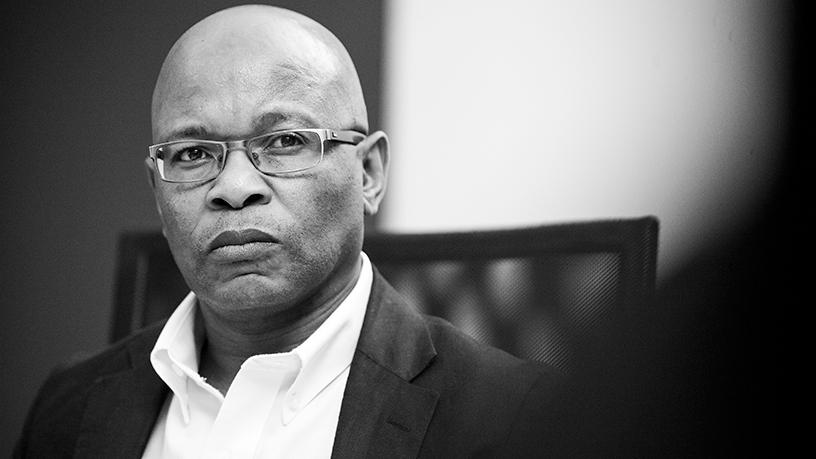How are datacentres changing?
Michele McCann, business development manager, Teraco: From what we've seen, customers want more than the basic fundamentals like power, security and space. They want more value out of the datacentre. This means, for example, that they want more power out of a single rank, certifications in place and they want to know who they can interconnect with inside the datacentre.
The trend we are seeing is that many companies no longer want big server rooms, but rather 'rackspace' and the ability to connect with services like Amazon Direct and Microsoft Express Route. They are asking questions like, 'How do I interconnect, how do I rig my traffic, how do I migrate?'
Willem Marais, chief business development officer, Liquid Telecom: Another key driver in changing datacentres is demand by corporates to be more environmentally friendly. They are increasingly looking at ways to be conserve water and energy.

Julian Thomas, principle consultant, PBT Group: What a datacentre is to a lot of corporates is a combination of freedom and security. They don't specialise in technology and, frankly, don't care. They don't want to be stuck in the mud with the details. Datacentres give them the freedom to focus on their core commitment, which is doing business. They are happy to let someone else develop the competencies and take the risk.
Are datacentre operators more than just `landlords'?
Ant Dyboll, senior product portfolio manager datacentres, Internet Solutions: We are morphing into hotels, to be honest. We have a set amount of occupancy we have to fill. We want to make sure you feel safe in there, that it's a comfortable requirement for you and you have all the amenities you want.
Today's datacentre has changed. It's a place where a marketplace lives. It's no longer a place to drop a server, you can do that anywhere. It has become a facility where a lot of the people you are doing business with also are. This means you can interconnect with them, which makes it a lot more attractive.
By outsourcing, it not only brings down cost, but also frees up their skilled staff to do more important tasks.
Michele McCann, Teraco
For a datacentre to be efficient, it has to be full and that means no longer acting like a landlord where you just give a client space and pump it full of cold air.
Bradley Pulford, director of infrastructure solutions group, Dell EMC Africa: A datacentre used to be the epicentre of your infrastructure. All your critical workloads used to reside there. This is changing as technologies like GPUs, software-defined storage, and hyper-converged infrastructure (HCI) are impacting how datacentres are used.

If you look at how datacentres are based around storage, computing and networking, this setup consumed a lot of space and power, and was also not very efficient.
We are moving into something very different from the old physical epicentre of infrastructure.
Patrick Maphopha, ?Africa technology evangelist, NetApp SA: When you look at where we are going, it's similar to buying a car. Before, when we bought cars, we used to own them. Nowadays, there is a trend towards leasing them. This new model is reflected in how datacentres are used today.
Moussou Sene, cloud infrastructure strategist, Oracle South Africa: New technology has made a big difference in how datacentres are used and what they are used for. We have, for instance, developed equipment that uses less floor space and needs less cooling. Cloud computing has also made it possible for startup companies to use someone else's datacentre or to lease one.

Michele McCann, Teraco: We have also seen this trend. Before, you had to have someone to run the datacentre. One of the big expenses that this person had to deal with - especially in Africa - was keeping the generators running. It was not unusual for this person to spend over R1 million on doing that. He would look at this and wonder, 'Why is this on my bottom line?'
What a datacentre is to a lot of corporates is a combination of freedom and security. They don't specialise in technology, and, frankly, they don't care.
Julian Thomas, PBT Group
This is why many companies are moving to us. By outsourcing, it not only brought down cost but also freed up their skilled staff to do more important tasks.
Does a company still need to own their own datacentre?
Patrick Maphopha, NetApp SA: Yes and no. The most important thing for them is data, which they need to secure. They then have to figure out which data they want to keep on-premise, which data they want to keep near the cloud and what they want to keep in the cloud.

It depends on how core this data is to their operations. Most of them will say, 'I don't need it. I'm just a small company. My core focus is to provide a service.'
But if you take an organisation like the National Prosecuting Authority, it wants to keep its data on its premise because the information it has is important to the whole company.
Nick Wonfor, enterprise account manager, Commvault South Africa: I think at the moment, it's application-dependent, as there might be a lot of legacy applications that are mainframe-based.
We are starting to see a lot of hybrid models where certain applications are remaining in-house and where other applications like disaster recovery are going into the cloud.
The main thing we need to understand, is that at the moment, no true hypercloud has been deployed in South africa.
Willem Marais, Liquid Telecom
Even so, a lot of organisations are holding back on going into the cloud because they want to see the impact of regulatory changes.
Willem Marais, Liquid Telecom: The main thing we need to understand, is that at the moment, no true hypercloud has been deployed in South Africa. It's on its way. But as it now stands, corporations prefer to keep their data on-premise. Once hypercloud computing starts to happen in South Africa, I believe we will see a significant shift.
Julian Thomas, PBT Group: I don't think it's wrong to be on-premise. What it comes down to - besides whether it's part of their core function - is flexibility. If a company has a set business model and does not need to experiment, then it is probably perfectly happy keeping it on-premise.

But if a company is rapidly changing, or going through digitisation or it's experiencing a data explosion, it will benefit from taking its datacentre off-premise and even taking its data into the cloud.
Moussou Sene, Oracle South Africa: If you look at large companies like those in the telecom and financial service sectors, on-premise datacentres are still relevant in South Africa.
This is because, to these companies, data is critical. They are also hesitant to move to the cloud because a lack of connectivity in the country is still a hindrance.

Take a telco, for instance; its billing system can be as a large as a 100 terabytes, so putting something this large into the cloud can be expensive given the connectivity cost involved.
Warren Bonn, IT operations manager, Entelect Software: I agree that connectivity is probably our greatest challenge. When customers are used to wire speed transfers of a 100MB on a 10MB line, it's not going to make a difference when they are trying to access a 100 terabytes of data.
Michele McCann, Teraco: We are seeing a combination of the two. People still want to run parts of their own datacentre, but they also want the ability to be able to scale down as they migrate into the cloud.

From what we are seeing, connectivity is not a real issue because in our datacentres, they can interconnect with many of the larger players.
Bradley Pulford, Dell EMC Africa: One of the things we are seeing from our customers is that that there is a technology piece, but there is also a cost piece. They tell us that although there are many benefits from a technology perspective, when it comes to driving innovation, the reality is you have to budget for this innovation.

When looked at this way, going into the cloud is not cost-effective for now. We are not there from a cost point of view. That's what's holding us back.
What's making it expensive? Is it access to fibre?
Bradley Pulford, Dell EMC Africa: I don't think it's just access to fibre. You also have to look at some of the tech around datacentres. We are starting to see prices come down in areas like storage. Over the next six to 12 months, you are going to see an aggressive adoption.
Jargon Buster
- Hyper-converged infrastructure (HCI): This is where all the elements of the infrastructure are virtual rather than physically in the hardware.
- GPU: A Graphics Processing Unit is an electronic circuit specifically designed to rapidly manipulate and alter memory.
- Software-defined storage: Applications that manage data storage resources and functionality but that are not dependent on the underlying physical storage hardware.
Willem Marais, Liquid Telecom: Cost is coming down. If you remember, in 2009, before the landing of the Seacom undersea cable, international bandwidth was $3 500/MB. Compare that to today, where you can get 100MB for less than $5. Costs have been driven down further by the establishment of a national long distance network, which connected the undersea cable landing points with nearby cities; the setting up of metro fibre networks are also playing their part in cutting costs. We are now in the phase of deploying fibre directly to the home and into the enterprise.
The game changer will be when datacentres start interconnecting with each other through dark fibre. This will enable them him to provide hyperclouds.
This article was first published in the March 2018 edition of ITWeb Brainstorm magazine. To read more, go to the Brainstorm website.
* Article first published on brainstorm.itweb.co.za
Share